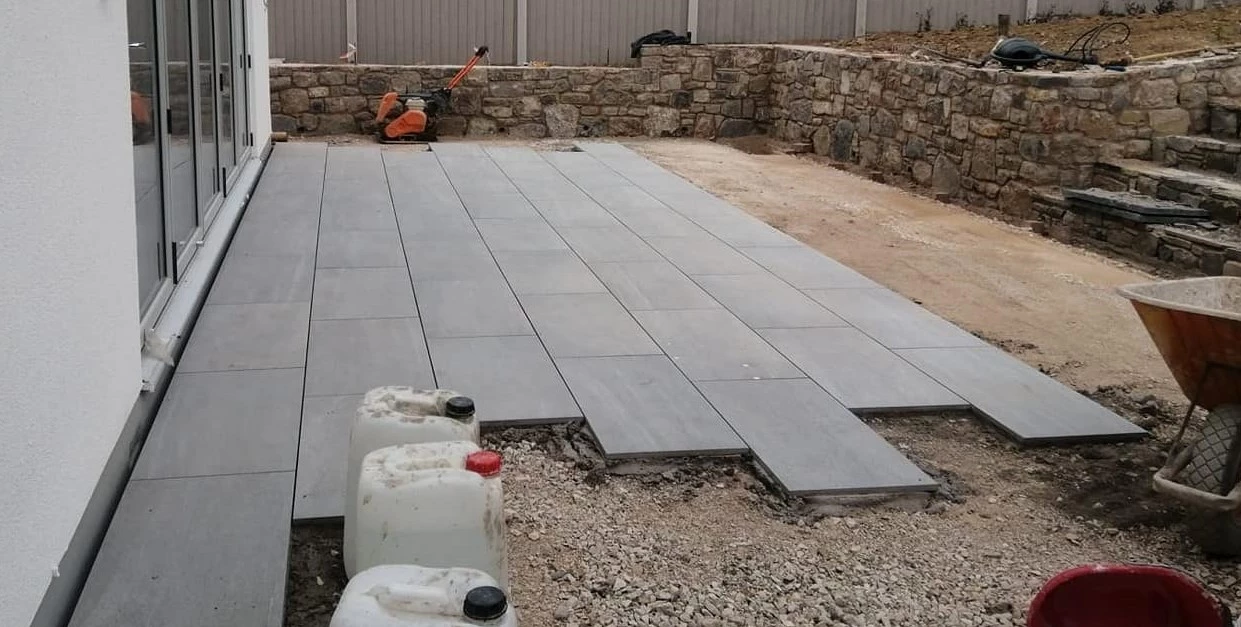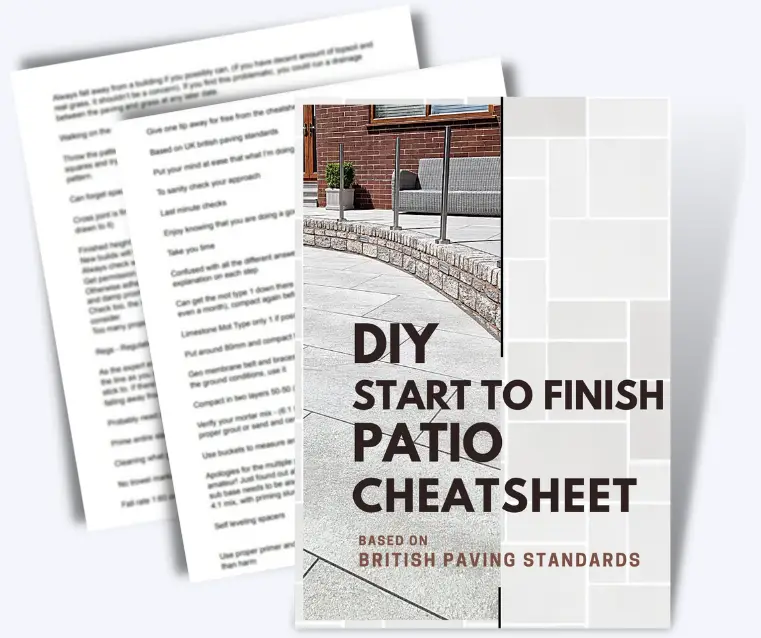How Much Mortar (Sand & Cement) You Need to Lay a Patio?

Article is trusted from UK landscaping community
After preparing the sub-base, the next thing in the process of laying a patio is to prepare mortar for the bedding to lay the slabs on. For someone who lays a patio every week, it’s a no-brainer for them but if you’re a DIYer attempting your first patio then you’ve to think of how much sharp sand and cement will you need.
Here is what the general rule of thumb says for a 40mm thick, considered to be a sound and secure bed depth.
For a full bed of 40mm depth, you need one bulk bag (850 kg) of sharp sand and 6-7 bags of cement per 10 square meters. For example; to do a 50 sq. m. bed you need 5 bulk bags of sharp sand and 30-35 bags of cement.
British Standard 7533 – Part 101 states ideal mortar bed thickness to lay paving on as 30mm.
Luckily, there are many online calculators to calculate approximate quantities of sharp sand and cement required based on the size, depth, and ratio of sand to cement you enter. But if you want to hear an explanation on it, stick with the post.
You Need One Bulk Bag of Sharp Sand per 8-10 m2 of Mortar Bed
One bulk bag of sharp sand should cover between 8 to 10 square meters of full mortar bed that’s 50 mm deep.
People think that bulk bags of sharp sand are 1 ton and that’s not true. Remember that they’re between 700-900 kilos nowadays because it can lead to incorrect calculations.
You Need 6-7 Bags of Cement per Bulk Bag of Sharp Sand
Per bulk bag of sharp sand, you need 6-7 cement bags of 25 kilos that’s 6-7 bags of cement (150-175 kg) for 8-10 square meters of full mortar bed that has a depth of 50mm.
Cement usually comes in 25kg bags so, roughly 150-175 kilos of cement per bulk bag or per 8-10 square meters assuming that the depth will be 50mm.
If you’re a DIYer laying paving slabs for the first time ever, make sure to check out our DIYer’s Start to Finish Patio Cheat Sheet here which will make you more confident as a DIYer.
The quantity of sharp sand and cement you need for the mortar bed highly depends on the type of mortar bed, its depth, and the ratio of sharp sand and cement you use to make the mortar. Let’s take a look at each of these things.
Mortar Bed Type
I’m assuming that you’re laying the patio on a full mortar bed and that’s what my calculations are based on in this post. Because instead of a proper full mortar bed, if you lay slabs with the dot and dab method, you would require way less sand and cement for the mortar mix.
But it’s not a proper job. I’ve seen numerous times that people who have laid their slabs using the dot and dab method had to lift the slabs because they were stained. So, it’s always good to have your patio laid on a full-mortar bed.
Mortar Bed Depth
The mortar bed starts from 30mm, and some people even get up to a 90mm deep mortar bed. I’ve seen 40-50mm depth is ideal and what most people use to lay the slabs. Hence, I’ve said one sharp sand bulk bag and 6-7 cement bags per 8-10 m2 at 50mm.
Mortar Mix Ratio
Obviously, you’ll need more cement if you go with a stronger mix like 4:1 compared to 5:1 or 6:1. There’s no perfect recipe for the mortar mix to lay paving slabs as people use what works the best for them.
Read our post on why to use 6:1 sand to cement mix if you’re a DIYer first time laying paving slabs.
Some people also use builders’ sand with sharp sand and cement which can also affect the quantity required.

Get the DIYer’s Start to Finish Patio Cheat Sheet
✓ A handy little PDF book to sanity check things as you go and think through each step in your DIY paving project making you confident in what you are doing even when you’re not a professional paving installer.
How Much Mortar to Mix at a Time?
Mix the sand and cement to make the mortar in small amounts if you’re doing it for the first time.
Because if you make the mortar in large quantities, you should have the confidence to lay the slabs quickly before it dries out.
In Conclusion
See, you don’t know exactly what it takes unless you do it so, there’s no way to predict exactly what it takes for a particular job.
So far, you have got a fair idea that for every 10m2 you need a bulk bag of sharp sand and 7 bags of cement that will work most of the time. Based on that, you can calculate the rough amount of sand and cement needed for the mortar bed to lay down a patio.
Get the sand and cement in that much quantity, notice how it’s going, and get more if required.
Looking for someone to do the right job? Enquire to the best contractor possible in your area
Just enter the details below and we will make sure to get back to you with the best installers in your area.

Thanks, probably the easiest to follow set of instructions and info about how to calculate sand/cement ratio etc I’ve found so far. Going to be my 1st time laying a patio of 20 600 x 600mm slabs to extend the “small and narrow” patio I got in my new build property……. .
I’m glad you found it useful! We’ve many more resources for especially DIYers.
Also, DIYers who are currently in the process of laying a patio, reach me out at askyogeshk(at)gmail(dot)com, we’ve something really helpful coming up if you’re a first-timer or DIYer laying paving.
UPDATE: The thing is ready now. It’s called the DIY Start to Finish Patio Cheat Sheet (check here) for DIYers to just do a more better job of laying paving.
I’m laying 60 600mm ×600mm slabs how many bags of cement would I need and sharp sand
Works out easily if you ascertain the total area required to lay the slabs you mentioned. 600mm*600mm slabs mean each slab will cover 0.36 sq. m. and multiply it by the no. of slabs (as all slabs are of the same size) which tells your total paving area around 21.5 sq. m.
To pave this much area, you’ll 2 bulk bags of sharp sand and 15 bags of cement to have a nice 40-50mm mortar bed (which is recommended). If you’re doing it yourself, you can have our DIY Patio Cheat Sheet with you to revise some important stuff; like if these 20% things are done correctly could bring 80% results in your DIY paving project.
I am laying 15 450 x 450 slabs, but wanted to use ready made motar. How many bags will I need please?